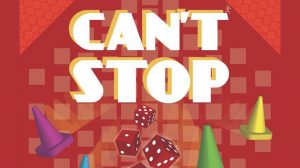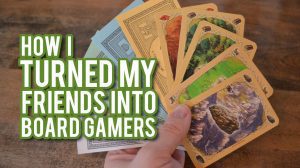In this Sid Sackson classic, players must press their luck with dice and choose combinations tactically to close out three columns. The board has one column for each possible total of two six-sided dice, but the number of spaces in each column varies: the more probable a total, the more spaces in that column and the more rolls it takes to complete. On their turn, a player rolls four dice and arranges them in duos: 1 4 5 6 can become 1+4 and 5+6 for 5 & 11, 1+5 and 4+6 for 6 & 10, or 1+6 and 4+5 for 7 & 9. The player places or advances progress markers in the open column(s) associated with their chosen totals, then chooses whether to roll again or end their turn and replace the progress markers with markers of their color. A player can only advance three different columns in a turn and cannot advance a column which any player has closed out by reaching the end space; if a roll doesn’t result in any legal plays, the turn ends with that turn’s progress lost.
A predecessor from 1974, The Great Races, exists as a paper-and-pencil game.
Games based solely on rolling dice have become a little passé in the board game world. Read our review of Can’t Stop to find out if it’s worth picking the dice...
Maryland has a small convention named Congress of Gamers. It's a good convention, so it seemed a good idea to learn something from the man behind the con. Join...
This is everything you ever wanted to know about the Spiel des Jahres board game awards, including a complete list of every winner, nominee, and recommendee...
We all want to share our favorite hobbies, one of mine is playing good board games. Here's how I turned my Monopoly playing friends into a regular gaming group.













